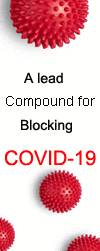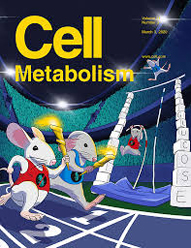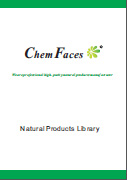| In vitro: |
| Biochimica Et Biophysica Acta General Subjects, 1981, 678(2):238-244. | | Activation of superoxide production and differential exocytosis in polymorphonuclear leukocytes by cytochalasins A, B, C, D and E: Effects of various ions.[Reference: WebLink] | All of the common cytochalasins activate superoxide anion release and exocytosis of beta-N-acetylglucosaminidase and lysozyme from guinea-pig polymorphonuclear leukocytes (neutrophils) incubated in a buffered sucrose medium.
METHODS AND RESULTS:
Half-maximal activation of both processes is produced by approx. 0.2 microM cytochalasin A, cytochalasin C greater than 2 microM cytochalasin B greater than or equal to 4-5 microM cytochalasin D, cytochalasin E. While maximal rates of O2- release and extents of exocytosis require extracellular calcium (1-2 mM), replacing sucrose with monovalent cation chlorides is inhibitory to neutrophil activation by cytochalasins. Na , K or choline inhibit either cytochalasin B- or E-stimulated O2- production with IC50 values of 5-10 mM and inhibition occurs whether Cl-, NO3- or SCN- is the anion added with Na or K . Release of beta-N-acetylglucosaminidase in control or cytochalasin B-stimulated cells is inhibited by NaCl(IC50 approximately 10 mM), while cytochalasin E-stimulated exocytosis is reduced less and K or choline chloride are ineffective in inhibiting either cytochalasin B- or E-stimulated exocytosis. Release of beta-glucuronidase, myeloperoxidase or acid phosphatase from neutrophils incubated in buffered sucrose is not stimulated by cytochalasin B. Stimulation of either O2- or beta-N-acetylglucosaminidase release by low concentrations of cytochalasin A is followed by inhibition of each at higher concentrations.
CONCLUSIONS:
It appears that all cytochalasins can activate both NAD(P)H oxidase and selective degranulation of neutrophils incubated in salt-restricted media and that differential inhibition of these two processes by monovalent cations and/or anions is produced at some step(s) subsequent to cytochalasin interaction with the cell. |
|

 Cell. 2018 Jan 11;172(1-2):249-261.e12. doi: 10.1016/j.cell.2017.12.019.IF=36.216(2019)
Cell. 2018 Jan 11;172(1-2):249-261.e12. doi: 10.1016/j.cell.2017.12.019.IF=36.216(2019) Cell Metab. 2020 Mar 3;31(3):534-548.e5. doi: 10.1016/j.cmet.2020.01.002.IF=22.415(2019)
Cell Metab. 2020 Mar 3;31(3):534-548.e5. doi: 10.1016/j.cmet.2020.01.002.IF=22.415(2019) Mol Cell. 2017 Nov 16;68(4):673-685.e6. doi: 10.1016/j.molcel.2017.10.022.IF=14.548(2019)
Mol Cell. 2017 Nov 16;68(4):673-685.e6. doi: 10.1016/j.molcel.2017.10.022.IF=14.548(2019)

